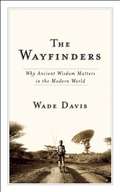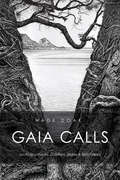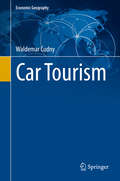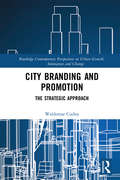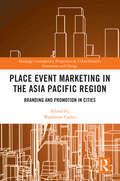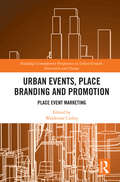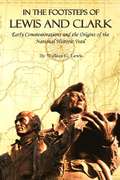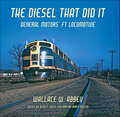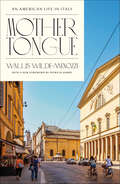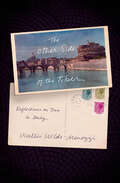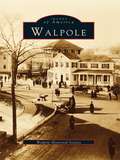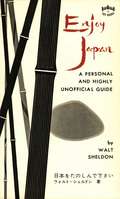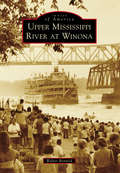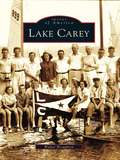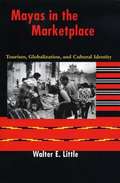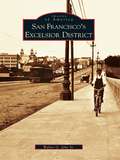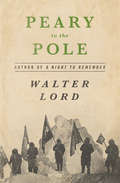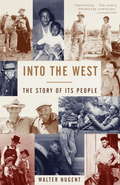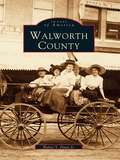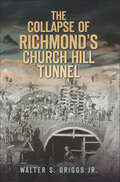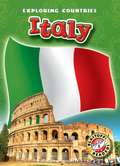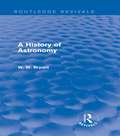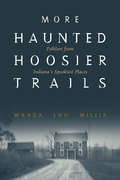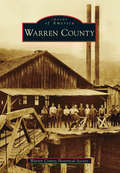- Table View
- List View
The Wayfinders: Why Ancient Wisdom Matters in the Modern World
by Wade DavisEvery culture is a unique answer to a fundamental question: What does it mean to be human and alive? Anthropologist and National Geographic Explorer-in-Residence Wade Davis leads us on a thrilling journey to celebrate the wisdom of the world’s indigenous cultures. In Polynesia we set sail with navigators whose ancestors settled the Pacific ten centuries before Christ. In the Amazon we meet the descendants of a true Lost Civilization, the people of the Anaconda. In the Andes we discover that the Earth really is alive, while in the far reaches of Australia we experience Dreamtime, the all-embracing philosophy of the first humans to walk out of Africa. We then travel to Nepal, where we encounter a wisdom hero, a Bodhisattva, who emerges from forty-five years of Buddhist retreat and solitude. And finally we settle in Borneo, where the last rainforest nomads struggle to survive. Understanding the lessons of this journey will be our mission for the next century. For at risk is the human legacy -- a vast archive of knowledge and expertise, a catalogue of the imagination. Rediscovering a new appreciation for the diversity of the human spirit, as expressed by culture, is among the central challenges of our time.
Gaia Calls
by Wade DoakWade Doak is one of the world's leading marine explorers. In Gaia Calls he takes his readers on a unforgettable journey. From his first discovery of the sunken treasure of the Elingamite, to life as a young man in the Solomon Islands living among the islanders, to years of dolphin research, diving adventures, and his discovery of interspecies communication. With patience, focus, and respect he shares his knowledge and love for the natural world, and leads his readers to a deeper understanding of the interconnectedness of all life. A fascinating and engaging document of a life well lived.
Car Tourism (Economic Geography)
by Waldemar CudnyThis book examines the role of cars and the space connected with their production and presentation in tourism development. It describes the role played by experiences and experience societies formed in the 20th c. in the development of contemporary tourism, including tourism related to cars. The book explores the influence of experiencing unusual events, such as car races, car fairs, visits to car industry museums or multifunctional spaces connected with producing and exhibiting cars (e. g. Autostadt or Audi Forum) on the development of a new type of tourism, i. e. car tourism. This kind of tourism is novel in two ways: firstly, it is a new phenomenon in science, as so far it has not been thoroughly studied or described, apart from various short articles. Secondly, this type of tourism has developed on a large scale only in recent years, mainly due to the huge investments made by powerful European car manufacturers (e. g. Autostadt, Audi Forums, Porsche Museum, Lamborghini Museum etc. ). The book presents cars and the spaces related to them as tourist assets (sites, events) and as tourist products that satisfy tourists' needs. Moreover, it connects the issue of car tourism to the marketing strategies of large car manufacturers and discusses the theory of tourism space, highlighting the main tourism spaces in which car tourism develops. It presents multifunctional spaces (factories, adventure centres - Autostadt in Wolfsburg), museums, car exhibitions, and race tracks. In the next chapter, following an introduction to the problem of events, the author describes events related to car tourism, including races, rallies, driving schools and car fairs. The book ends with a summarizing chapter, which includes a model of the function of car tourism as a separate type of tourism, as well as a discussion presenting the main features, advantages and disadvantages of car tourism in the context of the tourism space theory.
City Branding and Promotion: The Strategic Approach (Routledge Contemporary Perspectives on Urban Growth, Innovation and Change)
by Waldemar CudnyThis book explores theoretical concepts of strategic promotion and place branding in cities. It outlines the issues associated with strategic management of urban territories and highlights various types of development strategies that seek to encourage socio-economic development, growth and city branding, particularly within the tourism industry. It examines the rules and methods for analysing the current branding of a city and how new branding and promotion strategies are created. Through a range of international examples the book considers the missions, aims and implementation of branding strategies and the importance of monitoring and controlling procedures. The first part of the book provides theoretical context, followed by a detailed exploration of the promotional and branding strategy prepared for the city of Tomaszów Mazowiecki in Poland. This book provides the reader with theoretical and practical insights on city branding and will appeal to scholars and students in urban studies, geography, tourism, management and economics.
Place Event Marketing in the Asia Pacific Region: Branding and Promotion in Cities (Routledge Contemporary Perspectives on Urban Growth, Innovation and Change)
by Waldemar CudnyThis book explores the fascinating phenomenon of place event marketing in the Asia Pacific region. It examines procedures in the promotion and branding of places that use events to shape their identities. It considers how events are used in forming a branded image of a place and disseminate information about it. This innovative book offers theoretical insights of the opportunities and challenges related to place event marketing. With contributions from leading thinkers in the field, chapters also draw on empirical examples to showcase a variety of events across the Asia Pacific, such as MICE, sporting events, festivals, and religious and cultural celebrations. The book explores the importance of such events for the socio-economic development of urban regions. Today, the Asia Pacific is one of the world's fastest developing regions and its rising economic power is accompanied by the growing importance of the tourism and event sector. The book is a unique study relating to a very exceptional region of the world. The role of events in tourism development and the rise of the region’s soft power is presented through carefully selected examples of cities from different countries. The book concludes with commentary on the future directions for research in this area. Written in an accessible style, this book will be of great interest to students, scholars, and practitioners working in events studies, urban studies, tourism, place branding and promotion, business and management studies, geography, sociology, and sport and leisure studies.
Urban Events, Place Branding and Promotion: Place Event Marketing (Routledge Contemporary Perspectives on Urban Growth, Innovation and Change)
by Waldemar CudnyUrban Events, Place Branding and Promotion explores the phenomenon of place event marketing, examining the ways in which events are used to brand and disseminate information about a place. It provides a novel contribution to the literature, capturing the growing interest in place promotion, and offers in-depth insights on the role of events. With a focus on urban locations, this book defines the scope and concept of place event marketing. It demonstrates that different kinds of events, for leisure and business, can be used to successfully develop, promote and brand different types of places. Individual chapters written by a variety of leading academics explore how various public and non-governmental institutions that deal with promotion and marketing communications of places can implement event marketing activities and how such institutions organize, co-organize and sponsor different events. The effects of event marketing activities on urban place promotion and branding are thoroughly explored through a variety of international empirical case studies. This will be of great interest to upper-level students and researchers in events marketing and management, tourism and the broader field of urban geography. The concluding chapter also proposes future research directions.
In the Footsteps of Lewis and Clark
by Wallace G. LewisAlthough it was 1806 when Lewis and Clark returned to St. Louis after their journey across the country, it was not until 1905 that they were celebrated as national heroes. In the Footsteps of Lewis and Clark examines how public attitudes toward their explorations and the means of commemorating them have changed, from the production of the Lewis and Clark Exposition in 1905 to the establishment of the Lewis and Clark National Historic Trail in 1978 and the celebrations of the expedition's bicentennial from 2003 through 2007. The first significant stirrings of national public interest in Lewis and Clark coincided with the beginning of a nationwide fascination with transcontinental automobile touring. Americans began to reconnect with the past and interact with the history of Western expansion by becoming a new breed of "frontier explorer" via their cars. As a result, early emphasis on local plaques and monuments yielded to pageants, reenactments, and, ultimately, attempts to retrace the route, promoting conservation and recreation along its length. Wallace G. Lewis details the ingenuity that inspired the establishment of the Lewis and Clark National Historic Trail, opening a window to how America reimagines, recreates, and remembers its own past. In the Footsteps of Lewis and Clark will appeal to both scholarly and armchair historians interested in the Western frontier as experienced by both Lewis and Clark and those retracing their steps today.
The Diesel That Did It: General Motors' FT Locomotive (Railroads Past and Present)
by Wallace W. AbbeyThe Diesel That Did It tells the story of the legendarydiesel-electric locomotive, the FT.As war loomed in 1939, American railroads were on the precipice of railroad transformation. In an obscure factory in La Grange, Illinois, a group of gifted engineers and designers were planning a revolution that would shake railroading to its foundations and eventually put the steam locomotive out of business. Their creation, the FT, was a diesel-electric, semi-streamlined freight engine. The FT would establish a new standard for reliability, flexibility, and cost, but its arrival unsettled many railroad employees and gave fresh ammunition to their labor unions, who believed that it threatened a century-old culture.Wallace W. Abbey's The Diesel That Did It is the story of a revolution. He explores how EMC (and its successor Electro-Motive Division of General Motors) conceived the FT, and how it ultimately emerged as the dominant locomotive power plant for 20 years. However, for Abbey, the history of the Santa Fe Railway and the FT go hand in hand. The Diesel That Did It also offers a penetrating look at how the great American railroad, at the height of its Super Chief glamor, threw its conservative mechanical traditions aside to bet big on the diesel. Showcasing more than 140 exquisite photographs by Abbey and other noted photographers, The Diesel That Did It is a captivating story not to be missed by railroaders and railfans.
Mother Tongue: An American Life in Italy
by Wallis Wilde-MenozziA probing and poetic examination of language, food, faith, and family attachment in Italian life through the eyes of an American who moved to Parma with her husband and family. In the 1980s, the American writer Wallis Wilde-Menozzi moved permanently with her Italian husband and her daughter to Parma, a sophisticated city in northern Italy, where he became a professor of biology. Her search for rootedness in the city that was to be her home introduced her to complexities in her identity as she migrated into another language and looked for links beyond the joys of Verdi, Correggio, and Parmesan cheese, which visitors have rightly extolled for centuries. The local resistance to change perceived as individualistic led Wilde-Menozzi to explore the pull and challenge of difference and discover the backbone she needed for artistic freedom. In Mother Tongue, Wilde-Menozzi offers stories of far-sighted lives, remarkable Parma men and remarkable women, including the Renaissance abbess Giovanna Piacenza, the fighting Donella Rossi Sanvitale, and her own indefatigable mother-in-law. Framed with a new introduction by the author, and a new foreword by Patricia Hampl, this classic on diversity and tolerance, family, faith, and food in Italy and the United States is at once timeless and timely, a “large, beautiful window into the intelligent, literate, reflective life of Italy” (Shirley Hazzard).
The Other Side of the Tiber: Reflections on Time in Italy
by Wallis Wilde-MenozziA moving and illuminating memoir about a singular woman's relationship with a fascinating and complex countryA fresh, nuanced perspective on a profoundly perplexing country: this is what Wallis Wilde-Menozzi's unique, captivating narrative promises—and delivers.The Other Side of the Tiber brings Italy to life in an entirely new way, treating the peninsula as a series of distinct places, subjects, histories, and geographies bound together by a shared sense of life. A multifaceted image of Italy emerges—in beautiful black-and-white photographs, many taken by Wilde-Menozzi herself—as does a portrait of the author. Wilde-Menozzi, who has written about Italy for nearly forty years, offers unexpected conclusions about one of the most complex and best-loved countries in the world. Beginning her story with a hitchhiking trip to Rome when she was a student in England, she illuminates a passionate, creative, and vocal people who are often confined to stereotypes. Earthquakes and volcanoes; a hundred-year-old man; Siena as a walled city; Keats in Rome; the refugee camp of Manduria; the Slow Food movement; realism in Caravaggio; the concept of good and evil; Mary the Madonna as a subject—from these varied angles, Wilde-Menozzi traces a society skeptical about competition and tolerant of contradiction. Bringing them together in the present, she suggests the compensations of the Italians' long view of time. Like the country, this book will inspire discussion and revisiting.
Walpole
by Walpole Historical SocietyWalpole, Massachusetts, located about 20 miles southwest of Boston, has undergone an interestingtransformation from a rural community dotted with farms, to an industrial landscape dominated by factories and plants, to a modern bedroom suburb of Boston. This volume of over two hundred photographs, many published for the first time, presents a well-rounded view of Walpole from the late eighteenth century into the mid-twentieth century. Readers will see a Walpole that has mostly disappeared and will have the opportunity to stroll down Main Street before it and other roads were paved, to observe and peek into forgotten, antiquated homes and government buildings, and to walk in the shadows of the great mills. Two of the nationally known industries that this book touches upon are Kendall's Curity, which produced diapers, band aids, and other medical supplies; and Bird and Son, which manufactured roofing shingles, siding products, floor coverings, and cardboard boxes.
Enjoy Japan
by Walt SheldonFor several years Walt Sheldon has been helping visitors and foreign residents to understand and appreciate things Japanese through the medium of his popular weekly radio program "Enjoy Japan" over the U.S. Forces' Far East Network. Now, in his latest book, Mr. Sheldon presents his own "personal and highly unofficial guide" to Japan, its people, places, and outstanding features. In chatty and intimate style he discusses, among other things, such wide-ranging topics as the geisha, the ancient gods, the emperor system, the Japanese "salary man, "resorts, cities, food, costume, language, sports, and theater. The visitor to Japan, as well as the newcomer who has arrived for a longer stay and the Westerner who is just plain interested in this Asian land will find here an assortment of interesting facts wittily presented and charmingly illustrated.
Upper Mississippi River at Winona (Images of America)
by Walter BennickWinona, located on an island where the upper Mississippi River flows from west to east, has been linked to the river from its earliest days. Before the community's settlement, Native Americans and white explorers sailed past Wapasha's Prairie in birchbark canoes, keel boats, and small sailboats. As early as the 1820s, steamboats plied the river while carrying people and goods to and from the state's interior. Before bridges began to crisscross the river, merchants had to use boats to bring people and supplies to Winona before they could travel farther west. The first bridge to cross the river was a swing bridge that allowed steamboats to pass. Images of America: Upper Mississippi River at Winona uses images collected and archived in the Winona County Historical Society's History Center to illustrate the history of the Mississippi River near Winona. Many of the photographs exhibited in this book have rarely been seen by the general public and have never been published.
Lake Carey (Images of America)
by Walter BroughtonLake Carey is a summer community of several hundred families in the Endless Mountains of northeast Pennsylvania. Lake Carey's story begins in 1874, when the narrow-gauge Montrose Railroad began service to the 262-acre glacial lake named Marcy's Pond. Cottages with gingerbread porches sprang up almost overnight; hotels, steamboats, and picnic groves swiftly followed. As World War I drew near, the renamed lake and its community were a fixture on the regional map. Their resort status was short-lived, however, as the changing American family and the advent of the automobile began an inexorable transformation. First to go were the crowded steamboats and excursion trains. A new, quieter era began, dominated by rental cottages and--at Lake Carey--regattas. Through vintage photographs, Lake Carey documents how the people who gathered here retained their strong sense of community born of the shared privilege of a place at the lake and the pleasures of summer pastimes.
Mayas in the Marketplace: Tourism, Globalization, and Cultural Identity
by Walter E. LittleSelling handicrafts to tourists has brought the Maya peoples of Guatemala into the world market. Vendors from rural communities now offer their wares to more than 500,000 international tourists annually in the marketplaces of larger cities such as Antigua, Guatemala City, Panajachel, and Chichicastenango. Like businesspeople anywhere, Maya artisans analyze the desires and needs of their customers and shape their products to meet the demands of the market. But how has adapting to the global marketplace reciprocally shaped the identity and cultural practices of the Maya peoples? Drawing on over a decade of fieldwork, Walter Little presents the first ethnographic study of Maya handicraft vendors in the international marketplace. Focusing on Kaqchikel Mayas who commute to Antigua to sell their goods, he explores three significant issues: sum; how the tourist marketplace conflates global and local distinctions. sum; how the marketplace becomes a border zone where national and international, developed and underdeveloped, and indigenous and non-indigenous come together. sum; how marketing to tourists changes social roles, gender relationships, and ethnic identity in the vendors' home communities. Little's wide-ranging research challenges our current understanding of tourism's negative impact on indigenous communities. He demonstrates that the Maya are maintaining a specific, community-based sense of Maya identity, even as they commodify their culture for tourist consumption in the world market.
San Francisco's Excelsior District
by Walter G. Jebe Sr.The Excelsior District traditionally has not been among San Francisco's "spotlight" neighborhoods, yet this area is an important residential and commercial zone that is home to some 30,000 residents. These rolling hills south of San Francisco's better-known districts are now covered with row upon row of houses, streets, and apartments. But places like the Excelsior were once sparsely populated, agrarian, and even rural. This volume of vintage photographs chronicles the Excelsior's intriguing journey from rugged swamp and farmland to the busy cosmopolitan neighborhood we know today. It is a tale of determined immigrant families putting down roots in a challenging locale and overcoming adversity to stake out a permanent enclave in this famed city. It is also a story of large-scale construction and reclamation to tame the rugged outskirts of San Francisco.
Peary to the Pole
by Walter LordExplorer Robert E. Peary&’s quest for the North Pole—a true Arctic adventure from the #1 New York Times–bestselling author of A Night to Remember. On March 1, 1909, only 413 miles of formidable ice separated Robert E. Peary from realizing his lifelong dream of becoming the first man to set foot on the North Pole. On that dark morning on Canada&’s Ellesmere Island, it was cold enough to freeze a bottle of brandy. The ice looked solid enough, but it sat atop seawater—and shifted violently according to the whims of the ocean below. Peary was used to the conditions—he&’d barely survived them just three years before when he first tried, and failed, to reach the earth&’s northernmost point. But this time around, no amount of peril could dissuade Peary and his party from their expedition. With a cry of &“Forward, march!&” the journey of a lifetime began. Written with thrilling detail and heart-pounding suspense by the author of Day of Infamy and other bestselling histories, Peary to the Pole is the definitive account of one man&’s trek through some of the world&’s most treacherous terrain, in search of adventure, discovery, and immortality, a classic for readers of books like In the Kingdom of Ice or The Last Place on Earth.
Into the West: The Story of Its People
by Walter NugentPaleo-Indians, Spanish conquistadors and settlers, gold rushers, and aspiring movie stars and computer moguls are among the people Nugent (history, U. of Notre Dame) profiles in his historic sweep of the US west. He explains such matters as how California became the most urban, most populous, and most ethnically diverse state in the country; why African Americans in the early 1900s thought Oakland and Denver more tolerant than San Francisco or Los Angeles; and what happened to the second generation of Mormons after the big migrations of the 1840s. Annotation c. Book News, Inc. , Portland, OR (booknews. com)
Walworth County (Images of America)
by Walter S. Dunn Jr.From 1870 to 1950, Walworth County, Wisconsin, experienced a period of dramatic social change. This fascinating collection of photographs provides avisual journey through time, depicting major changes in transportation and its effects on the beautiful shores of Lake Geneva. Developments in the railroad provided a huge catalyst for change before the turn of the century. Farmers were able to ship milk to Chicago and the annual influx of summer residents from the Chicago area quickly grew with the easy access to Lake Geneva's wealthy south shore. The advent of the automobile sparked a second radical change in the face of the county, opening up a vast radius of the Midwest to families who had once been restricted by the horse-drawn wagon. The oneroom school became a thing of the past, and the lakes became popular destinations for weekend visitors set to enjoy the leisurely pursuits of boating and fishing.
The Collapse of Richmond's Church Hill Tunnel (Disaster)
by Walter S. Griggs Jr.Explore the facts and mysteries surrounding the history and collapse of Richmond, Virginia's Church Hill Tunnel. A must for fans of railroad and Richmond history.Richmond, the capital of the Confederacy, was in shambles after the Civil War. The bulk of Reconstruction became dependent on the railways, and one of the most important links in the system was the Church Hill Tunnel. The tunnel was eventually rendered obsolete by an alternative path over a viaduct, and it was closed for regular operation in 1902. However, the city still used it infrequently to transport supplies, and it was maintained with regular safety inspections. The city decided to reopen the tunnel in 1925 due to overcrowding on the viaduct, but the tunnel needed to be strengthened and enlarged. On October 2, 1925, 190 ft. of the tunnel unexpectedly caved in, trapping construction workers and an entire locomotive inside.In recent years, there has been a renewed interest in the tunnel and the mystery surrounding its collapse. There were cave-ins and sink holes above the surface for decades after the tunnel was sealed up, and in 1998, a reporter from the Richmond Times-Dispatch did an investigation, trying to determine the current condition of the tunnel. In 2006, the Virginia Historical Society announced its efforts to try and excavate the locomotive and remaining bodies.
Exploring Countries: Italy
by Walter SimmonsBlastoff! Readers are carefully developed by literacy experts and combine standards-based content with developmentally appropriate text. Sticking out into the Mediterranean Sea, Italy has some of the nicest weather in Europe. It is famous for its art, architecture, and cuisine. Readers will discover the physical geography of Italy through descriptions of the landscape, waters, and coasts. They will also learn about the cultural geography of Italy, reading about Italian schools, businesses, and communities.
A History of Astronomy (Routledge Revivals)
by Walter W. BryantA History of Astronomy, first published in 1907, offers a comprehensive introduction to the steady development of the science since its inception in the ancient world up to the momentous progress of the nineteenth century. It includes biographical material relating to the most famous names in the study of astronomy – Copernicus, Galileo, Newton, Herschel – and their contributions, clear and accessible discussions of key discoveries, as well as detailing the incremental steps in technology with which many of the turning points in astronomy were intimately bound up.
More Haunted Hoosier Trails
by Wanda Lou WillisIndiana folklorist Wanda Lou Willis is back with all-new ghostly tales in this hair-raising companion to Haunted Hoosier Trails. Wanda explores Indiana's hidden history in spooky locations around the state. Local history buffs will relish the informative county histories that begin each chapter, while thrill-seekers will eagerly search out these frightening spots. More Haunted Hoosier Trails is perfect year-round for raising goose-bumps around the campfire or reading under the covers with a flashlight.
Warren County
by Warren County Historical SocietyWarren County's townships, nestled in the northwest corner of Pennsylvania, were originally formed from the land grants awarded by William Penn and his descendants to many individuals and families. Warren County was established March 12, 1800, and grew in prosperity from agriculture, lumber, oil, rafting, railroads, and tanning. The Allegheny National Forest and Allegheny River both provide magnificent arenas for many local recreational and business opportunities. In 1965, Warren County became home to the Kinzua Dam as the flooding of Corydon and parts of Kinzua Township created the reservoir. While most of the eastern and southern parts of the county are broken and hilly, the northeastern section is mostly glacial territory. Hearts Content in Watson Township is one of the few virgin timber tracts remaining in the Allegheny National Forest.
Light of India: A Conflagration of Indian Matchbox Art
by Warren DotzWith all the zany vibrancy of a Bollywood musical, the colorful matchbox labels of LIGHT OF INDIA present a fascinating confluence of popular culture and a sophisticated graphic arts tradition that stretches back for centuries. Populated with pouncing Bengal tigers, regal jungle elephants, and Hindu gods and goddesses, these miniature masterpieces are worlds unto themselves, skillfully illustrated with a naive yet irresistible charm. This delightful art book is sure to fire the imagination of all who wish to study, preserve, and celebrate India's more humble, but no less brilliant, visual arts heritage. A dazzling collection of more than 300 vintage matchbox labels from India, dating from the turn of the century through the 1950s. Includes a discussion of Hindu iconography, recurring visual themes and symbols, and the cultural and historical significance of matchbox art. A great resource for graphic artists and designers, collectors of paper ephemera or advertising art, and students of Indian culture. Gift edition slipcase includes a textured novelty "striker strip" along the spine.
